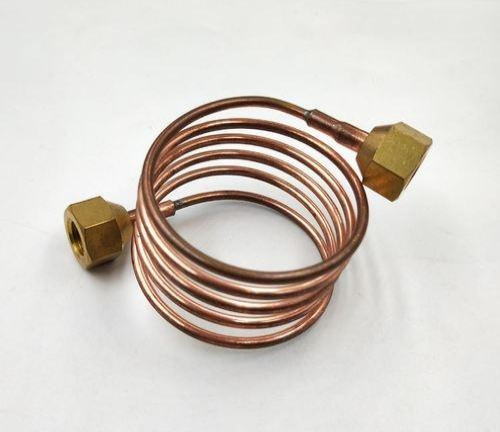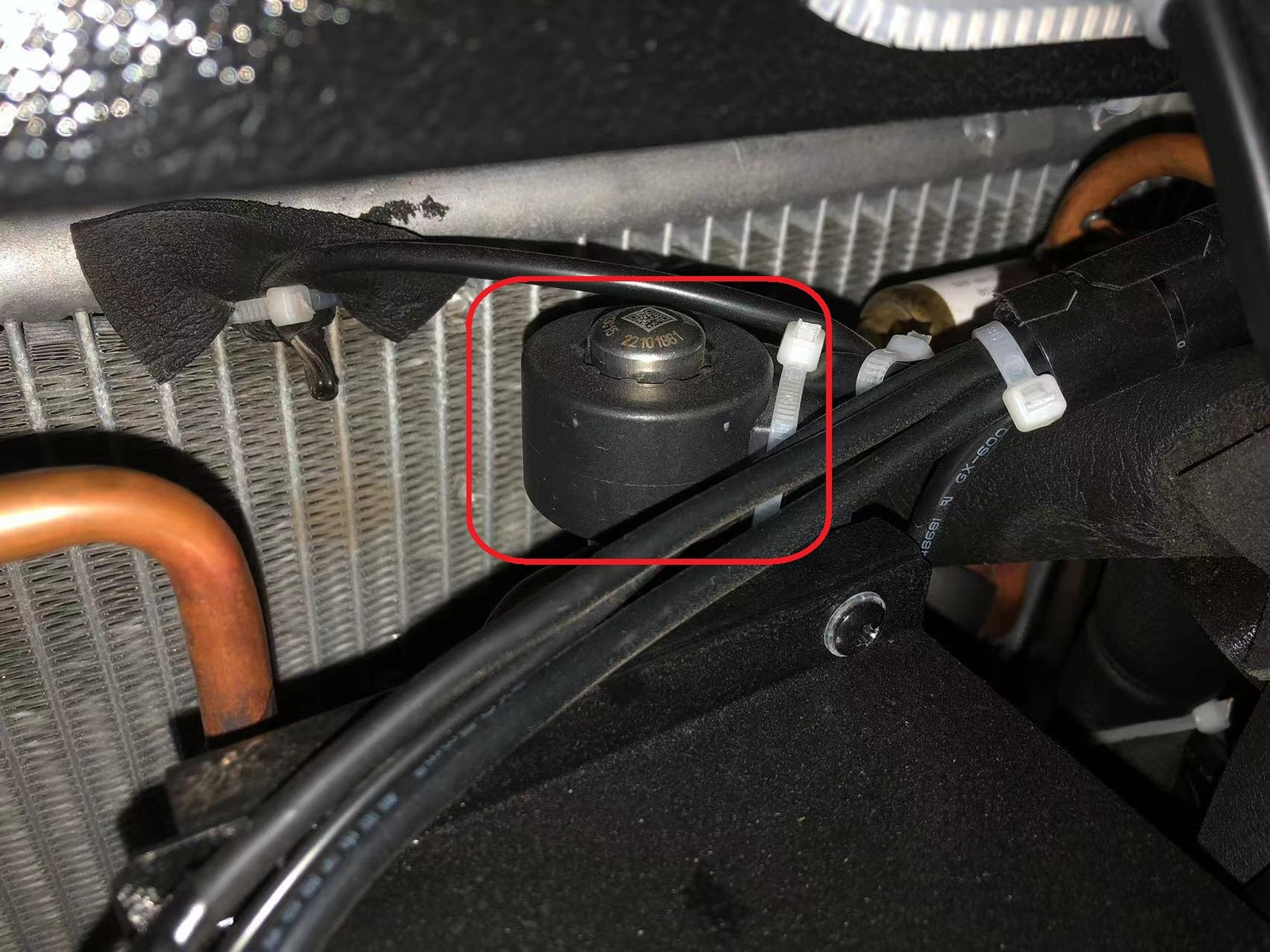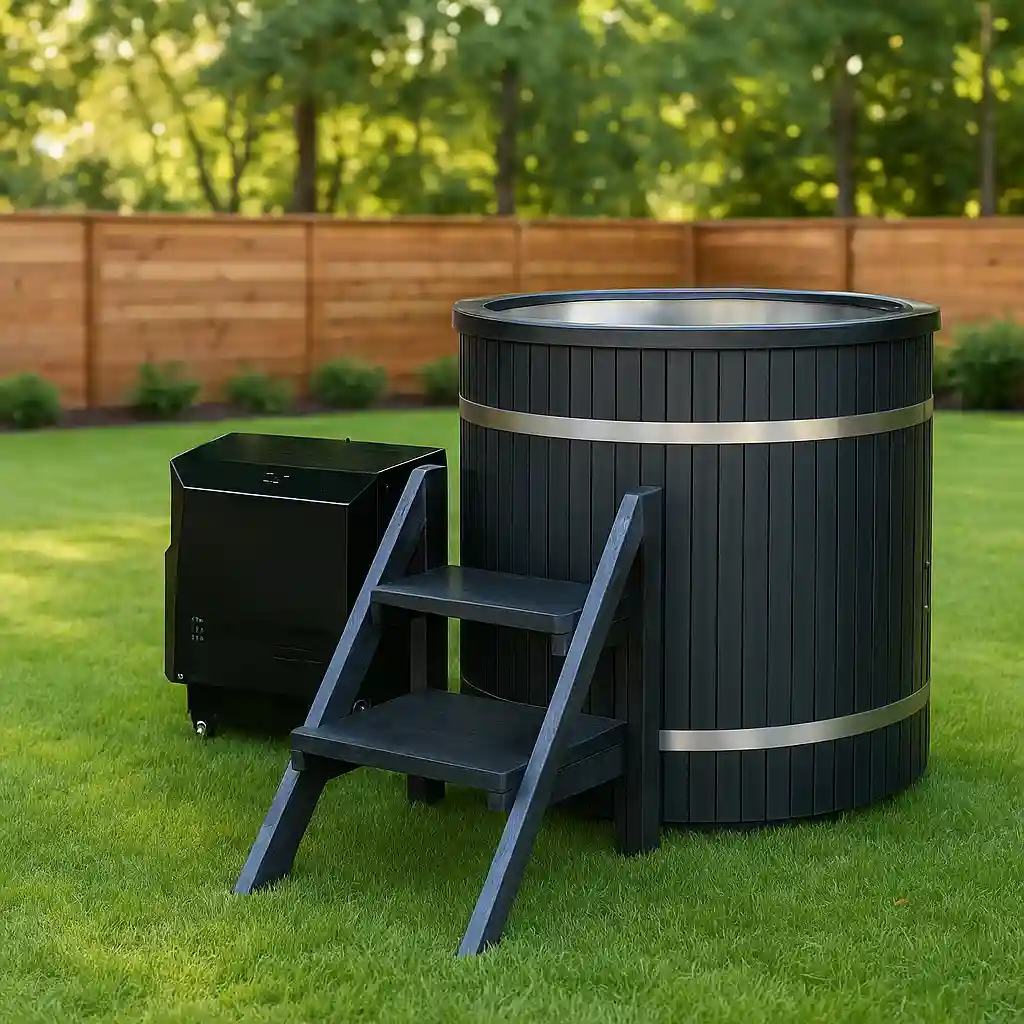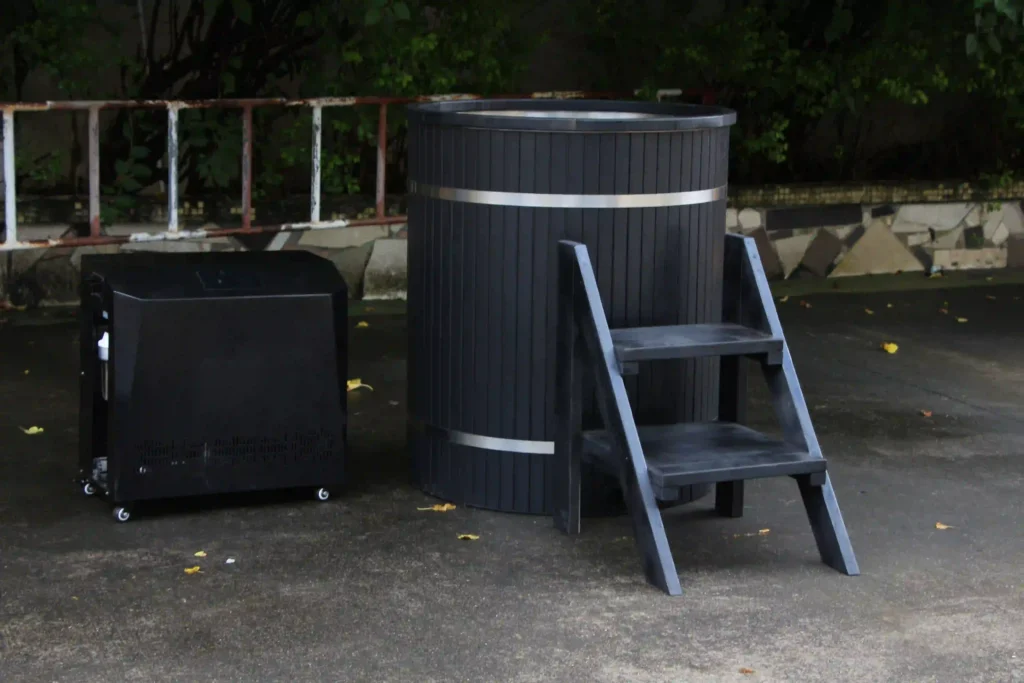Introduction: Why Efficiency Matters in Cold Plunge Systems
Cold plunge therapy relies on consistent water temperature, but not all chillers deliver the same performance. A system’s cooling speed and power usage come down to one key factor: **cold plunge chiller efficiency**. Surprisingly, the expansion valve—often overlooked—plays a major role in how effective and energy-efficient your setup really is. But while most users focus on tub size or water temperature, few consider the true performance driver behind every cold plunge setup—the chiller’s efficiency.
In cold plunge systems, the ability to cool water quickly and maintain stable temperatures is crucial. However, this performance is not just about motor size or compressor power. It’s about the overall system’s thermal efficiency, and a key part of that efficiency comes down to a small but critical component: the expansion valve.
Understanding the Efficiency Limit of Cold Plunge Chillers
Cold plunge chillers operate using vapor compression cycles, similar to air conditioners or commercial refrigerators. Their efficiency depends on multiple factors:
Compressor capacity and control
Refrigerant flow regulation
Evaporator and condenser coil design
Circulation rate of the water pump
Ambient air temperature and humidity
Insulation and thermal retention of the plunge tub
One of the biggest bottlenecks in the system is how refrigerant is delivered into the evaporator—and this is where expansion valves come into play.This inefficiency limits cold plunge chiller efficiency in demanding recovery routines.
Traditional Expansion Valves: Where They Fall Short
Improving cold plunge chiller efficiency starts with better refrigerant control.Conventional fixed or thermostatic expansion valves regulate refrigerant based on pressure-temperature readings, but they respond slowly to load changes. In plunge chillers, where water temperature may drop rapidly and operating conditions shift minute to minute, these old-style valves often:
Cause overfeeding or underfeeding of refrigerant
Create inefficient evaporation cycles
Lead to longer pull-down times (time to reach target cold temperature)
Increase power consumption during extended run cycles
Contribute to compressor stress and short cycling
These problems compound over time, leading to slower chilling, inconsistent water temperatures, and higher electricity bills.
How Improved Expansion Valves Enhance Cold Plunge Efficiency
Modern expansion valves—especially electronic expansion valves (EEVs)—use sensors and microprocessors to dynamically control refrigerant flow. They constantly adjust to system demand, ambient temperature, and load feedback.According to ASHRAE’s refrigeration efficiency guidelines, expansion valve responsiveness is one of the key drivers of overall cooling system performance.
Key advantages include:
✅ Precise refrigerant metering improves heat exchange efficiency
✅ Faster cooling response, especially in hot environments or large-volume tubs
✅ Lower power usage due to reduced cycle length
✅ Increased compressor lifespan from minimized cycling
According to ASHRAE refrigeration standards, expansion valve design and responsiveness significantly influence the system’s overall Coefficient of Performance (COP) and Seasonal Energy Efficiency Ratio (SEER).
Real-World Example: The CHU-10-RV Chiller Upgrade
Our CHU-10-RV cold plunge chiller is built with an upgraded electronic expansion valve and optimized flow logic. It delivers 0°C performance while using less energy than traditional systems.
Compared to a typical fixed-valve unit:
| Feature | Traditional Chiller | CHU-10-RV |
|---|---|---|
| Cooling time (25°C to 4°C) | ~60–75 min | ~35–45 min |
| Power draw (avg) | 750–800W | 620–680W |
| Target hold time | Inconsistent | Stable ±0.5°C |
| Compressor lifespan | ~2 years | 3+ years |
This upgrade doesn’t require any major reconfiguration. It’s a component-level improvement that delivers immediate results.
🔗 View full CHU-10-RV specifications →
Additional Tips for Maximizing Chiller Efficiency
Beyond expansion valves, you can further improve system efficiency by:
✅ Matching Chiller Size to Tub Volume
A 300L+ tub requires at least a 1HP chiller. Undersized units work harder and last shorter.
✅ Insulating All Tubing
Uninsulated hoses can increase heat gain, making chillers work harder to maintain temperature.
✅ Using Built-in Filters
Hair and debris can clog flow, straining both pumps and cooling loops.
✅ Regular Maintenance
Keep filters clean and check for refrigerant leaks. A system running low on gas will perform poorly even with the best components.
💡 See our full chiller maintenance guide here
Choosing the Right Cold Plunge Chiller
When evaluating which chiller is right for your needs, don’t just look at HP or price. Ask these key questions:
Does it use a fixed or dynamic expansion valve?
How long does it take to cool 300L from room temperature?
What’s the average power draw during chilling and standby?
Is it compatible with your tub’s size and circulation rate?
Compare all our cold plunge chiller models →
Summary: Efficiency Starts With the Right Details
Improving cold plunge chiller efficiency isn’t always about replacing the whole unit. Sometimes, rethinking one key component—like the expansion valve—can unlock better cooling, lower energy use, and a longer lifespan for your system.pgrading the valve can significantly boost cold plunge chiller efficiency with minimal cost.
If you’re looking to upgrade or build a more efficient setup, make sure your chiller is as advanced as the tub it’s connected to.
FAQ: Expansion Valves & Cold Plunge Efficiency
Q1: Is an improved valve worth the cost?
Yes. Even a mid-level upgrade can reduce energy use by 10–15%.
Q2: Will this work for outdoor tubs?
Definitely. In fact, fluctuating ambient temperatures make smart valve response even more critical.
Q3: Can I retrofit an old chiller?
Some models can be upgraded. Contact us to check compatibility.








